In 1995, a paper in the Harvard Business Review first introduced the theory of “disruptive innovation,” a process by which smaller, undercapitalized brands find a way to successfully challenge and “disrupt” established incumbent businesses. Originally, the HBR authors offered a specific, narrow definition for what qualified, or failed to qualify, as disruptive innovation. But in the 25 years that followed, both the theory and the term were co-opted by marketers and agencies alike who used “disruption” as a brand strategy, an industry buzzword, and a battle cry for challenger brands taking on the category killers. For three decades, the concept of “disruption” has been an empowering focus for dozens of brands, but it wasn’t for everyone.
That all changed in 2020 when COVID-19 turned the world upside down and shook it for more than a year. Now, catalyzed by the chaos of a global pandemic, most every brand from restaurants and packaged goods to healthcare and service providers find themselves in the center of the ultimate disruption and looking for ways to recover from the year that was.
Before the pandemic, the true disruptors were the brands that looked at the status quo and found a way to turn their respective industries on their heads. If you’re a brand that’s ever wanted to disrupt, blow things up, or forge a new way forward, COVID set that process in motion for you. The question now is what will you do with the opportunity?
Welcome to 2021 AC.
When historians look back at this period in time, they will clearly see a delineation between marketing BC (Before Coronavirus) and AC (After Coronavirus). Before COVID, there were a handful of companies like Netflix, Tesla, and Uber that we all recognized as true disruptors. Interestingly, in a 2015 article in the HBR looking back on the original paper on “disruptive innovation,” the authors argued that according to the actual theory, Netflix, Tesla, and Uber were NOT actual disruptors. As of this writing, those three “non-disruptor” brands have a cumulative market cap north of $1.13 trillion. Add to that other non-traditional brands like Stripe, Peloton, Airbnb, DoorDash and Etsy and clearly they are all disrupting something.
Did the pandemic wreak havoc on the branding world? Clearly. But, one could argue, for brands with the State of Market, State of Mind, and State of Readiness to lean into a disruptive mindset, there’s never been a better time than now to recreate yourself. To build the brand you’ve always wanted to be. To make the changes and take the calculated chances you need to take to trade “what is” for “what could be.” How do you embrace that mindset when you haven’t before? Here are five suggestions for how to start thinking like a disruptor:
Forget what you know.
In the past, when you’ve struggled to find clarity, you’ve no doubt heard the phrases “you’re missing the forest for the trees,” or “you’re just too close to it.” One of the hardest things to do as a business leader is to work on the vision for your own company. That’s because you know too much. You’re so intimate with your company’s strengths and weaknesses that, when any idea is proposed, the supercomputer in your brain goes to work connecting the dots and instantaneously (and usually erroneously) produces all the reasons that idea will or won’t work before you even have time to discuss it.







